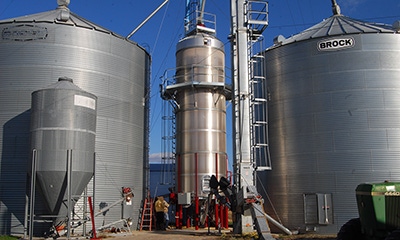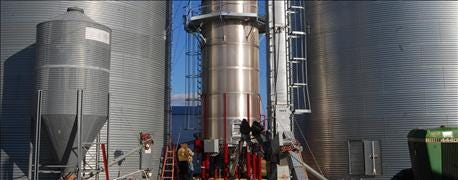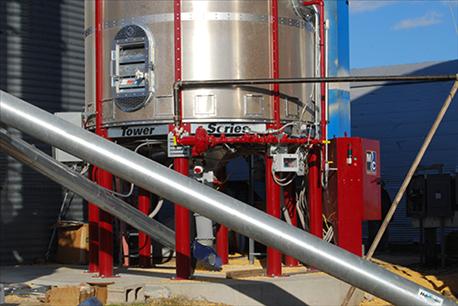
As harvest approaches, propane is a key cost for anyone using a high-temperature system to dry corn. A case study conducted by Mark Hanna, Iowa State University Extension ag engineer, can help farmers as they plan for harvest and winter storage.
"Considering that propane makes up such a large proportion of the energy needed for drying, farmers may want to compare their own propane consumption to the measurements from the case study," says Hanna.

FIELD TRIALS: Tests the past two years examined total energy used to dry corn. Propane accounted for 95% of energy consumed for high temperature bin drying. Electricity for fans and stirring equipment accounted for the remaining 5%.
You can use this information to help cut your drying cost
The case study results are featured in an updated publication from ISU Extension. "Energy Consumption during Grain Drying" (PM 3063C) is available for download from the ISU Extension Online Store, extension.iastate.edu/store.
Data from the two-year case study indicates that, on average, high temperature bin drying on Iowa farms uses approximately 0.019 gallons of propane per point of moisture removed per bushel of corn. In this study, propane measurements ranged from 0.015 to 0.022 gallons of propane per point per bushel.
"This case study provides benchmark information to help farmers estimate the propane needed for fall drying," Hanna says. "For one 80-acre field of corn, those savings can add up to hundreds or even thousands of dollars."
Big difference in amount of propane used to dry the wetter corn
For example, incoming corn at 23% moisture content required approximately 150 gallons of propane per 1,000 bushels of corn to dry down to 15% moisture content. But incoming corn at 18% moisture content required only 75 gallons of propane to dry the same amount of corn down to 15%.

CORN MOISTURE: There's a strong relationship between the initial corn moisture content and the amount of propane used to dry the grain. The corn in these ISU studies was dried down to approximately 15% moisture content.
Led by Hanna, three Iowa State farm trials were instrumental in measuring the propane and electricity used for grain drying during the 2013 and 2014 harvest seasons. The participating ISU Research and Demonstration farms included the Northeast farm near Nashua and the Armstrong Memorial farm near Lewis, as well as the Ag 450 teaching farm near Ames. Additional support for this project was provided by a grant from the Iowa Energy Center.
For more information about farm energy efficiency research and outreach, visit http://farmenergy.exnet.iastate.edu or follow @ISU_Farm_Energy on Twitter. The Farm Energy publications are part of a series of farm energy efficiency resources developed by ISU Farm Energy. This outreach effort aims to help farmers and utility providers to improve on-farm energy management and to increase profitability in a rapidly changing energy environment.
About the Author(s)
You May Also Like




